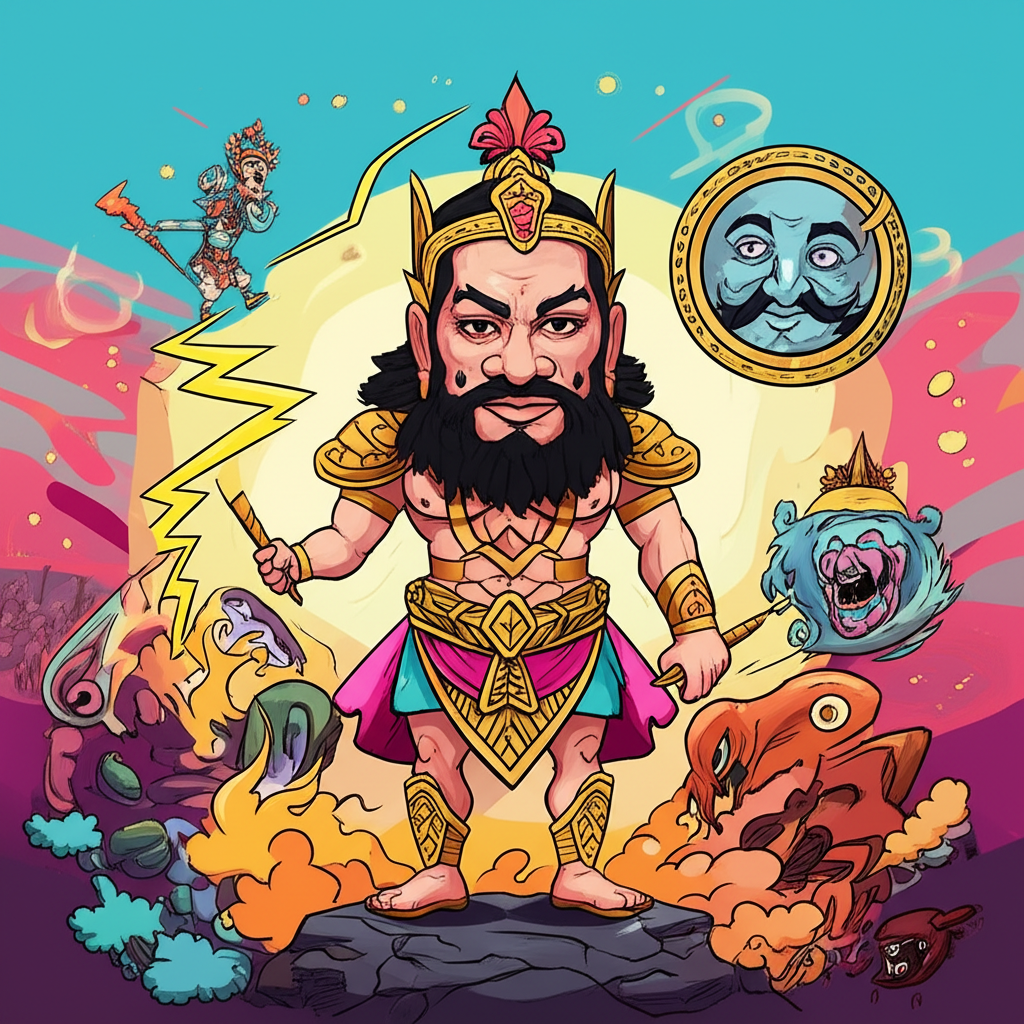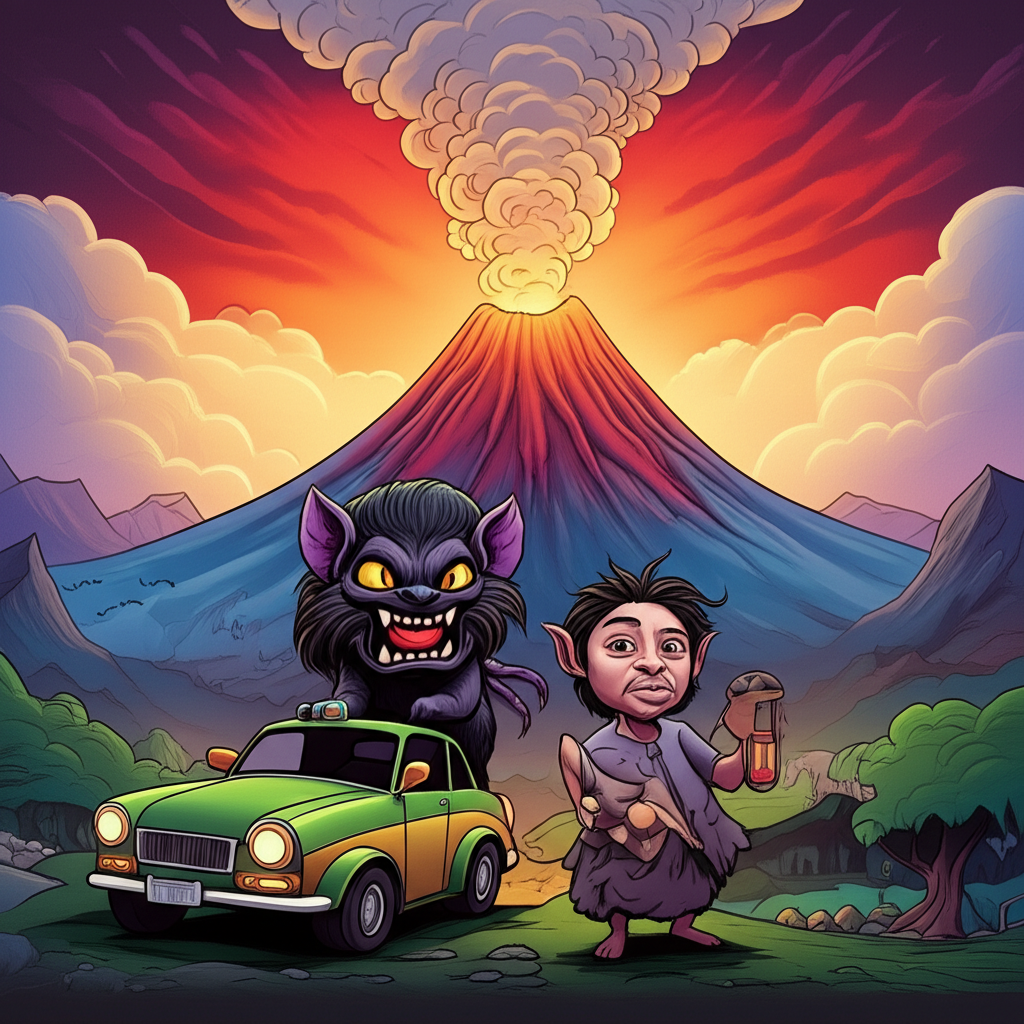
This story originates from the rich tapestry of Tagalog mythology, a collection of traditional narratives passed down through generations by the ancient people of the Philippines. It’s a glimpse into their understanding of the cosmos, the origins of the world, and the eternal struggle between opposing forces. These are not accounts of actual events or deities but rather cultural stories used to explain the world and its mysteries.
Origins and Cultural Background
To understand the tales of Bathala, we must journey back to the pre-colonial Philippines, a time when animism and ancestor worship thrived. The Tagalog people lived in close harmony with nature, their lives intimately intertwined with the rhythms of the seasons, the bounty of the land, and the power of the elements. Their society was structured around kinship and community, with datus (chiefs) leading settlements and babaylans (shamans) acting as intermediaries between the human and spirit worlds.
Their worldview was deeply spiritual, with the belief that spirits inhabited everything – from the towering trees to the flowing rivers, from the sun and moon to the smallest stones. Natural phenomena were attributed to the actions of these spirits, and life was a constant negotiation with the unseen forces that shaped their destiny. The myths they told were not merely entertainment; they were a way of making sense of the world, teaching moral lessons, and preserving their cultural identity. These stories served as explanations for the inexplicable, offering comfort in the face of hardship and providing a framework for understanding their place in the universe.
Character Description: Bathala
Bathala, in Tagalog mythology, is often referred to as the supreme deity, the creator of the universe and all that exists within it. He is portrayed as a wise and benevolent being, a powerful ruler who governs the heavens and watches over humanity. However, it’s crucial to understand that this figure is a product of a specific cultural narrative and not a representation of any divine truth.
Symbolically, Bathala can be seen as representing order, balance, and the creative force. He is the embodiment of the desire to understand the origins of the world and the forces that shape it. His existence within the myth serves to provide a framework for understanding the cosmos and the relationship between humanity and the natural world. His attributes, such as wisdom and benevolence, reflect the values that the ancient Tagalog people held in high esteem. He represents the desire for a just and harmonious world, a reflection of their own societal ideals.
Main Story: The War of Creation
In the beginning, there was only Bathala, the all-powerful being who resided in the heavens. He was the sole inhabitant of this vast, empty realm, and from him would spring forth all of creation. But the heavens were not entirely empty. Below Bathala’s realm lay the underworld, a dark and chaotic domain ruled by Ulilang Kaluluwa, a winged serpent of immense power and malice. Ulilang Kaluluwa, lonely and envious of Bathala’s domain, desired to rule the heavens as well.
One day, Ulilang Kaluluwa, fueled by his ambition, challenged Bathala for control of the universe. He ascended from the depths of the underworld, his serpentine body coiling through the void, his eyes burning with malevolent intent. Bathala, aware of the serpent’s approach, prepared for the inevitable clash.
The battle that ensued shook the very foundations of existence. Bathala, wielding his divine power, unleashed bolts of lightning and summoned storms to repel Ulilang Kaluluwa. The serpent retaliated with earthquakes and volcanic eruptions, attempting to drag the heavens into the abyss. The clash of their powers created a cacophony of sound and light, a cosmic storm that threatened to consume everything.
For what seemed like an eternity, the battle raged. Both Bathala and Ulilang Kaluluwa were evenly matched, their powers locked in a stalemate. But Bathala, with his wisdom and foresight, realized that the conflict could not continue indefinitely without destroying all that was. He decided to use his cunning to defeat his adversary.
During a momentary lull in the fighting, Bathala offered Ulilang Kaluluwa a truce. He proposed that they create a world together, a shared domain where both could exercise their power. Ulilang Kaluluwa, intrigued by the prospect of co-rule, cautiously agreed.
However, Bathala’s offer was a ruse. As they began to create the world, Bathala seized an opportunity to strike. He trapped Ulilang Kaluluwa within a massive pile of boulders, effectively imprisoning the serpent in the depths of the newly formed earth.
With Ulilang Kaluluwa vanquished, Bathala turned his attention to completing the creation of the world. From the serpent’s body, he fashioned the land, the mountains, and the seas. From his wings, he created the sky. From his scales, he made the stars and the moon. And from his tears, he brought forth the rivers and the lakes.
Bathala then populated the world with plants and animals, and finally, he created humanity, bestowing upon them the gift of life and the responsibility of caring for his creation. He became the benevolent ruler of the heavens, watching over his creation and ensuring its continued harmony.
Symbolism and Meaning
The story of Bathala and Ulilang Kaluluwa is rich in symbolism. The conflict between Bathala and Ulilang Kaluluwa represents the eternal struggle between order and chaos, good and evil. Bathala embodies the forces of creation, harmony, and benevolence, while Ulilang Kaluluwa represents destruction, discord, and malice.
The creation of the world from the body of Ulilang Kaluluwa symbolizes the idea that even from destruction, something new and beautiful can emerge. It also reflects the ancient Tagalog belief that the natural world is a manifestation of the divine, a sacred space that must be respected and protected. The story also speaks to the importance of wisdom, cunning, and the ability to overcome adversity. Bathala’s victory over Ulilang Kaluluwa is a testament to the power of intelligence and the importance of choosing peace over endless conflict.
Modern Perspective
Today, the myth of Bathala and the War of Creation continues to resonate in Philippine culture. It appears in literature, art, and even video games, often reinterpreted and adapted to modern sensibilities. In cultural studies, it is analyzed as a reflection of the pre-colonial worldview of the Tagalog people, providing insights into their beliefs, values, and social structures. It serves as a reminder of the rich cultural heritage of the Philippines and the importance of preserving traditional stories. The character of Bathala, while not a figure of worship, is often invoked as a symbol of Filipino identity and cultural pride.
Conclusion
The tale of Bathala and the War of Creation is a captivating story from Tagalog mythology, a window into the ancient worldview of the Filipino people. It is a cultural artifact, a testament to their imagination and their desire to understand the world around them. As Muslims, we acknowledge that only Allah is the true Creator and Sustainer of the universe. This narrative, while fascinating, is understood within the context of cultural heritage, not as a representation of divine truth. It is a reminder of the power of storytelling, the richness of cultural traditions, and the enduring human desire to make sense of the mysteries of existence. This story serves as a powerful example of cultural expression and the enduring legacy of human imagination.





